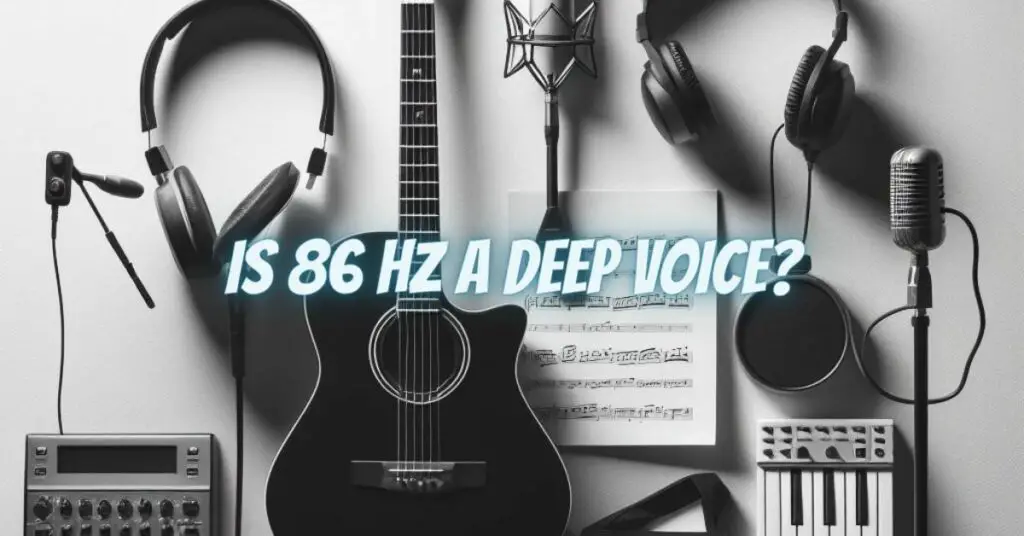The realm of audio frequencies is a vast landscape where every hertz contributes to the rich tapestry of sounds we encounter. In the pursuit of understanding vocal depth, the frequency of 86 Hz holds a particular significance. This article aims to unravel the acoustic nuances associated with 86 Hz and explore whether it can be considered a marker for a deep voice. By delving into the physics of sound, vocal anatomy, and the role of frequencies, we can gain insights into the complexities of defining depth in the realm of vocal tones.
- Fundamentals of Sound and Frequency: Sound is a vibrational energy that travels through a medium, typically air, and it is characterized by its frequency, measured in hertz (Hz). The frequency of a sound wave determines its pitch, with lower frequencies perceived as lower in pitch and higher frequencies as higher in pitch. In the context of vocal depth, lower frequencies become a focal point.
- Understanding 86 Hz: A frequency of 86 Hz falls within the lower end of the audible spectrum, often associated with the lower register of male voices. In the context of vocal analysis, it can be indicative of a resonant and full-bodied tone. However, it’s crucial to note that vocal depth is a multi-dimensional aspect influenced by various frequencies, resonances, and tonal qualities.
- Vocal Anatomy and Depth Perception: The depth of a voice is intricately tied to the physical characteristics of the vocal folds and the resonance chambers within the human body. A deeper voice is often characterized by longer and thicker vocal folds, which vibrate at lower frequencies, producing a richer and more resonant sound. However, the perception of vocal depth is subjective and can be influenced by factors beyond just the fundamental frequency.
- Role of Harmonics and Overtones: While 86 Hz represents the fundamental frequency, the harmonic content and overtones present in a vocal signal contribute significantly to the perceived depth. Harmonics are multiples of the fundamental frequency, and their presence enriches the overall timbre of the voice. A deep voice is often characterized by a robust harmonic structure, contributing to a sense of fullness.
- Cultural and Genre Influences: The perception of what constitutes a deep voice can be culturally and contextually influenced. Different musical genres and cultural preferences may emphasize certain vocal qualities, affecting how individuals perceive depth. While 86 Hz may align with a lower register, other factors such as vocal technique, resonance, and articulation also play crucial roles in shaping the perceived depth of a voice.
- Technological Considerations: In modern audio production, the manipulation of frequencies is a common practice. Equalization (EQ) tools are used to boost or attenuate specific frequency ranges, including the lower frequencies associated with vocal depth. Engineers can shape the tonal characteristics of a voice, emphasizing or de-emphasizing elements such as the 86 Hz range to achieve the desired sonic outcome.
While 86 Hz is indeed situated in the lower frequency range and is often associated with the lower register of male voices, defining vocal depth goes beyond a single frequency marker. The interplay of vocal anatomy, harmonics, cultural influences, and technological interventions contributes to the intricate tapestry of what we perceive as a deep voice. As we navigate the acoustic palette, it becomes evident that vocal depth is a complex and multifaceted phenomenon, and the significance of 86 Hz is just one piece of the intricate puzzle that defines the richness of the human voice.


